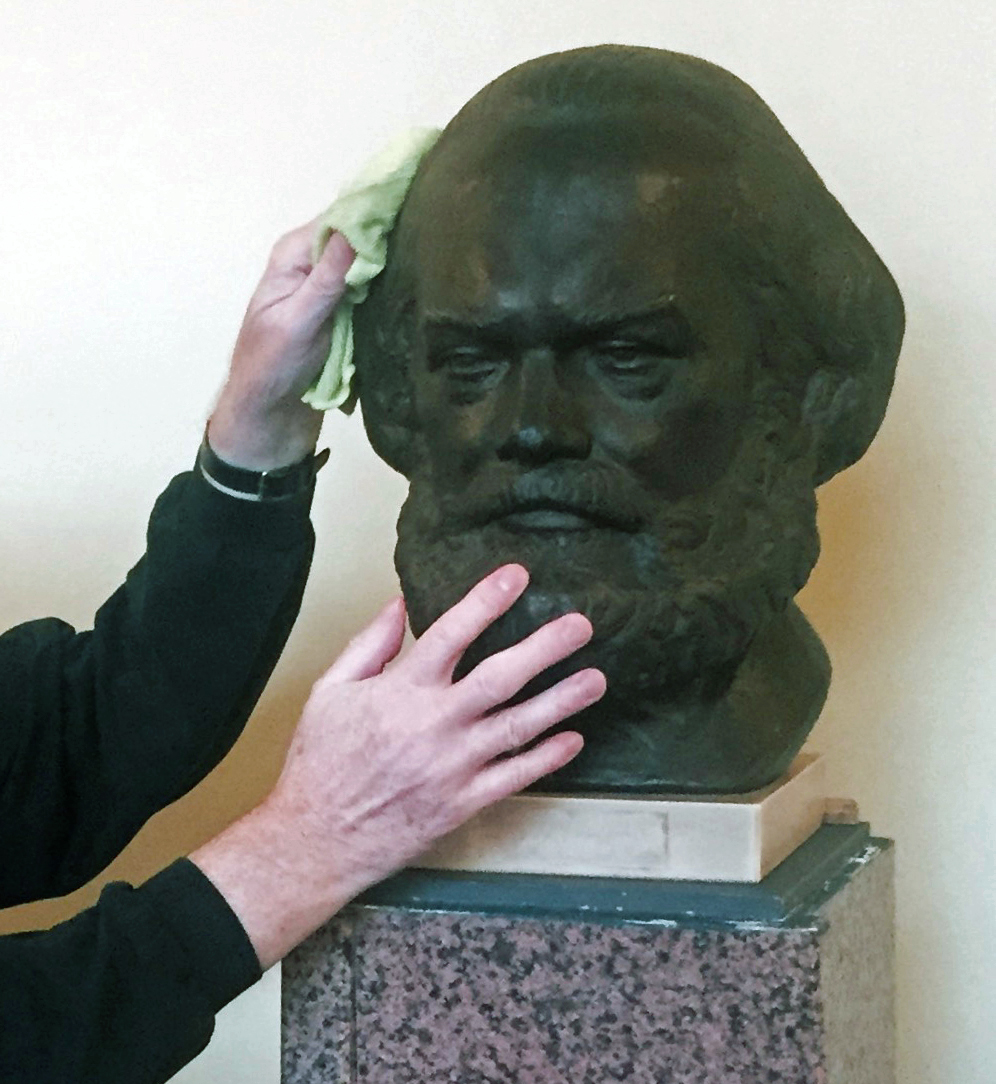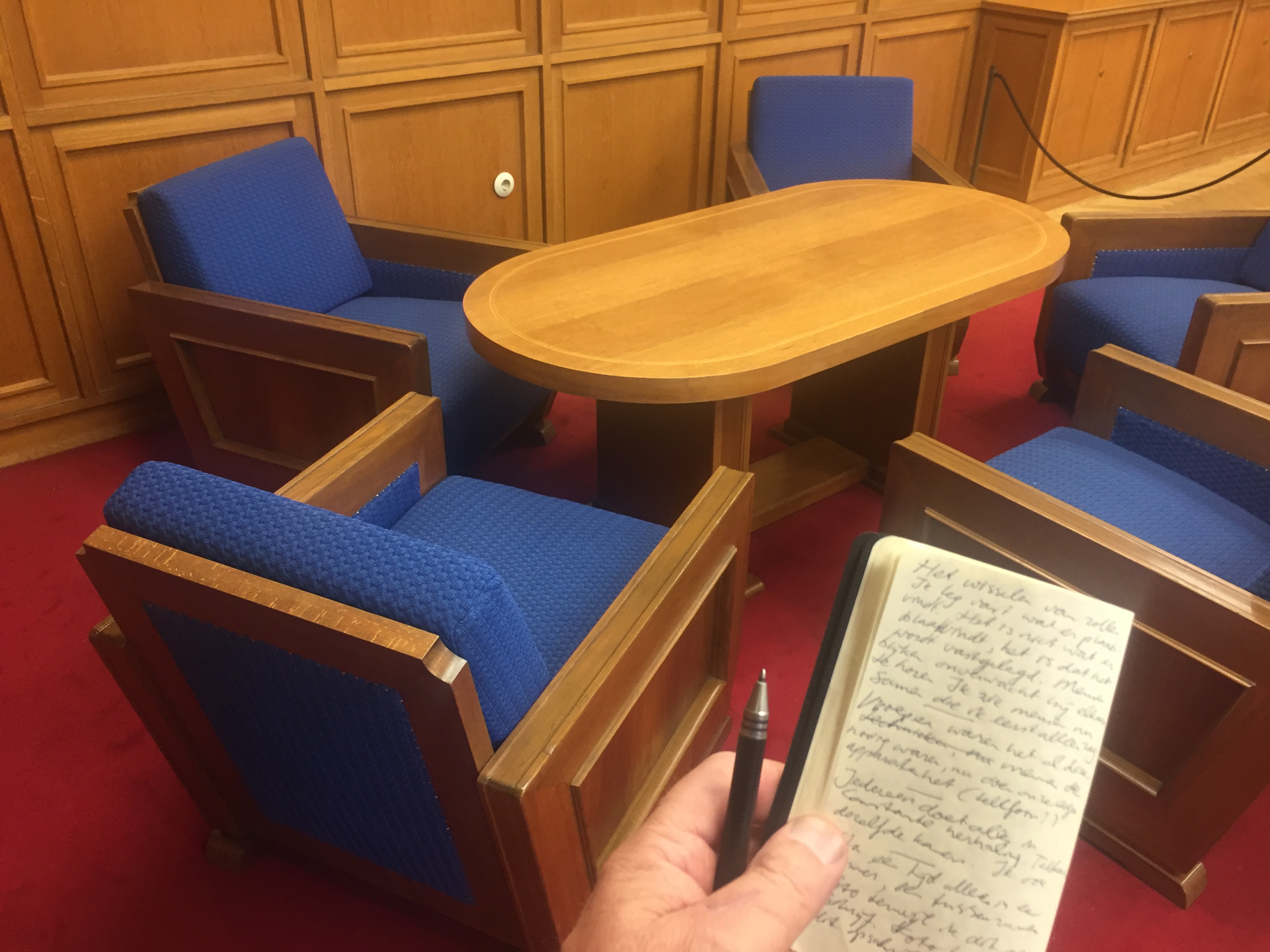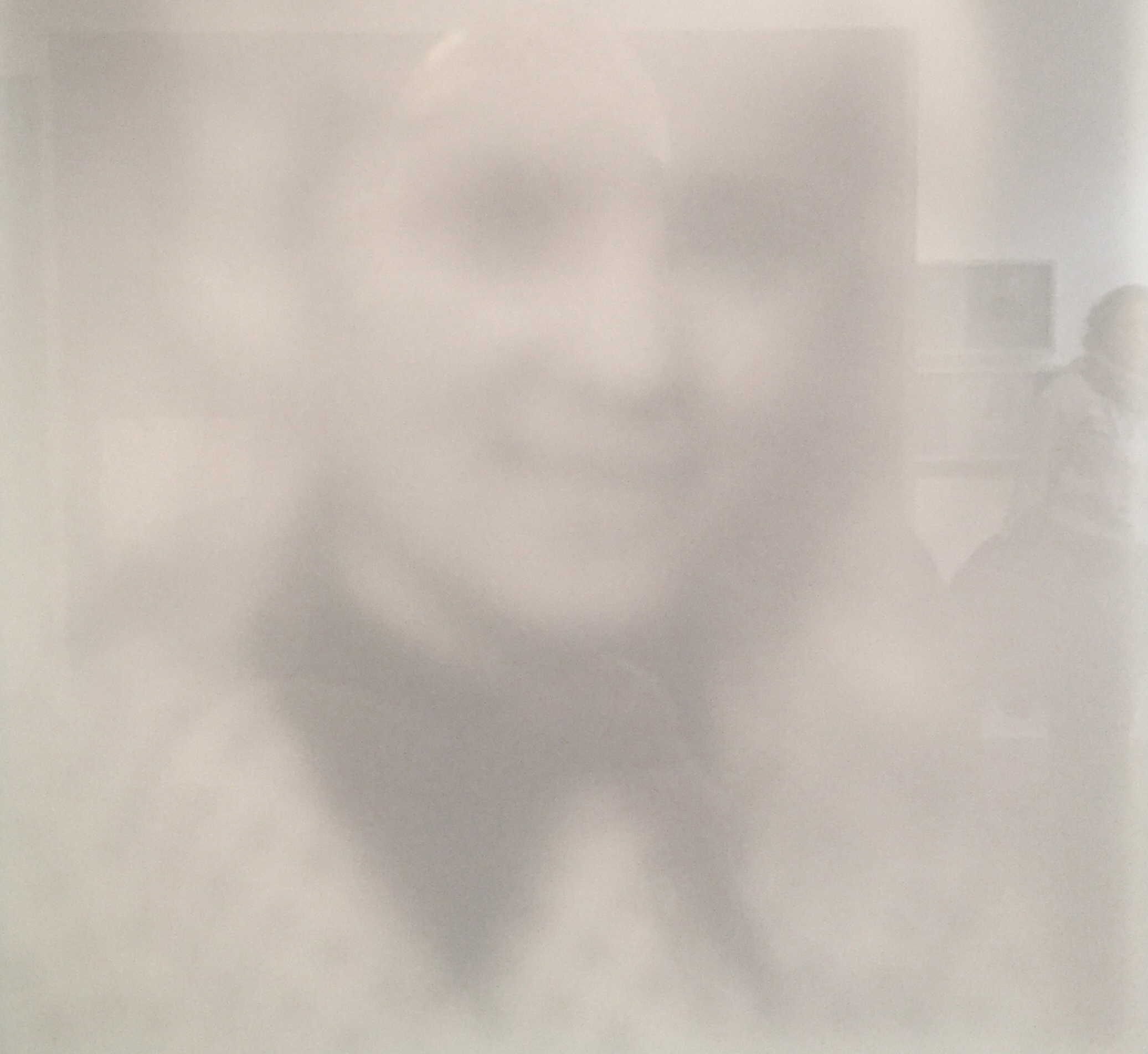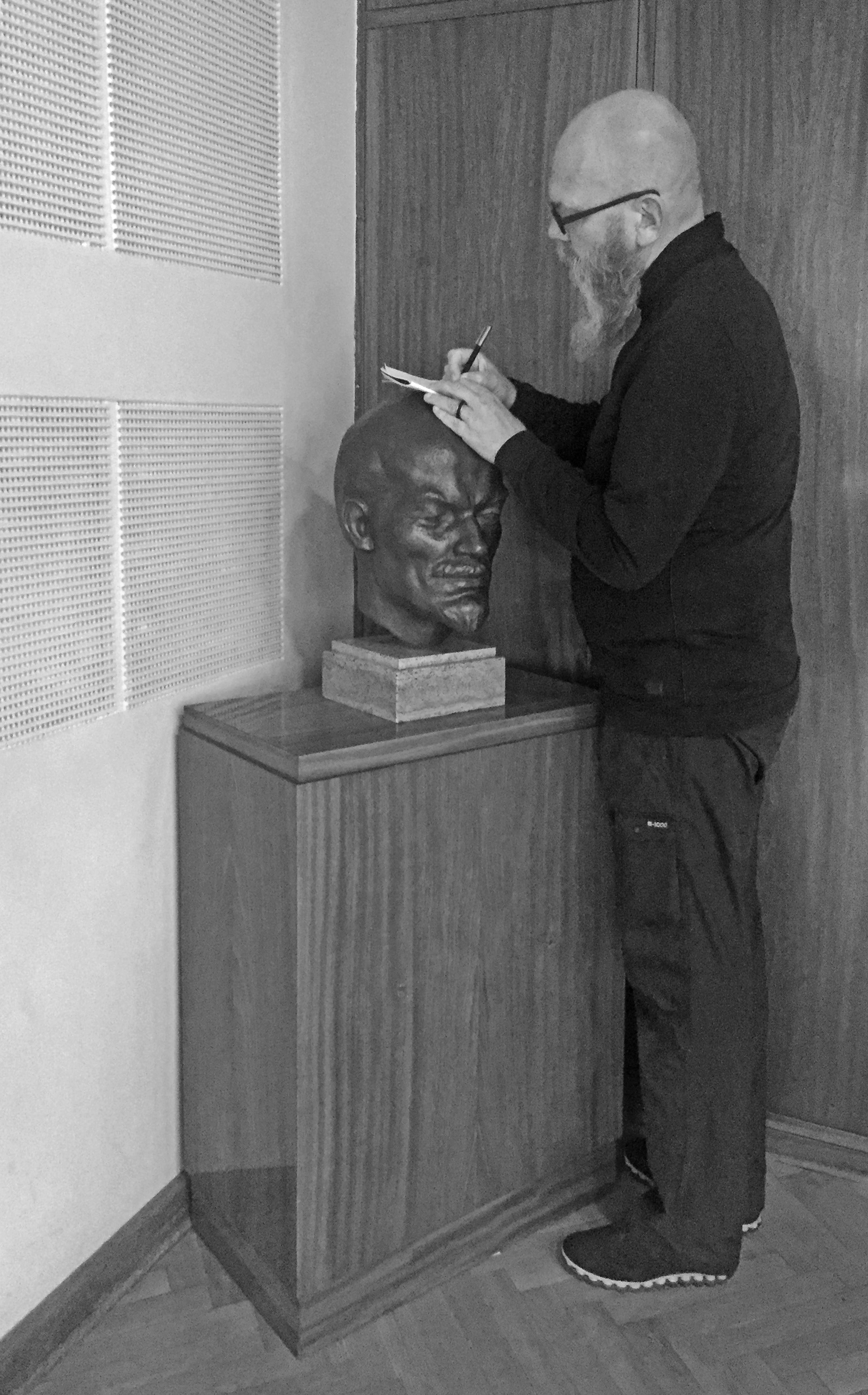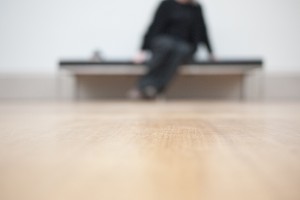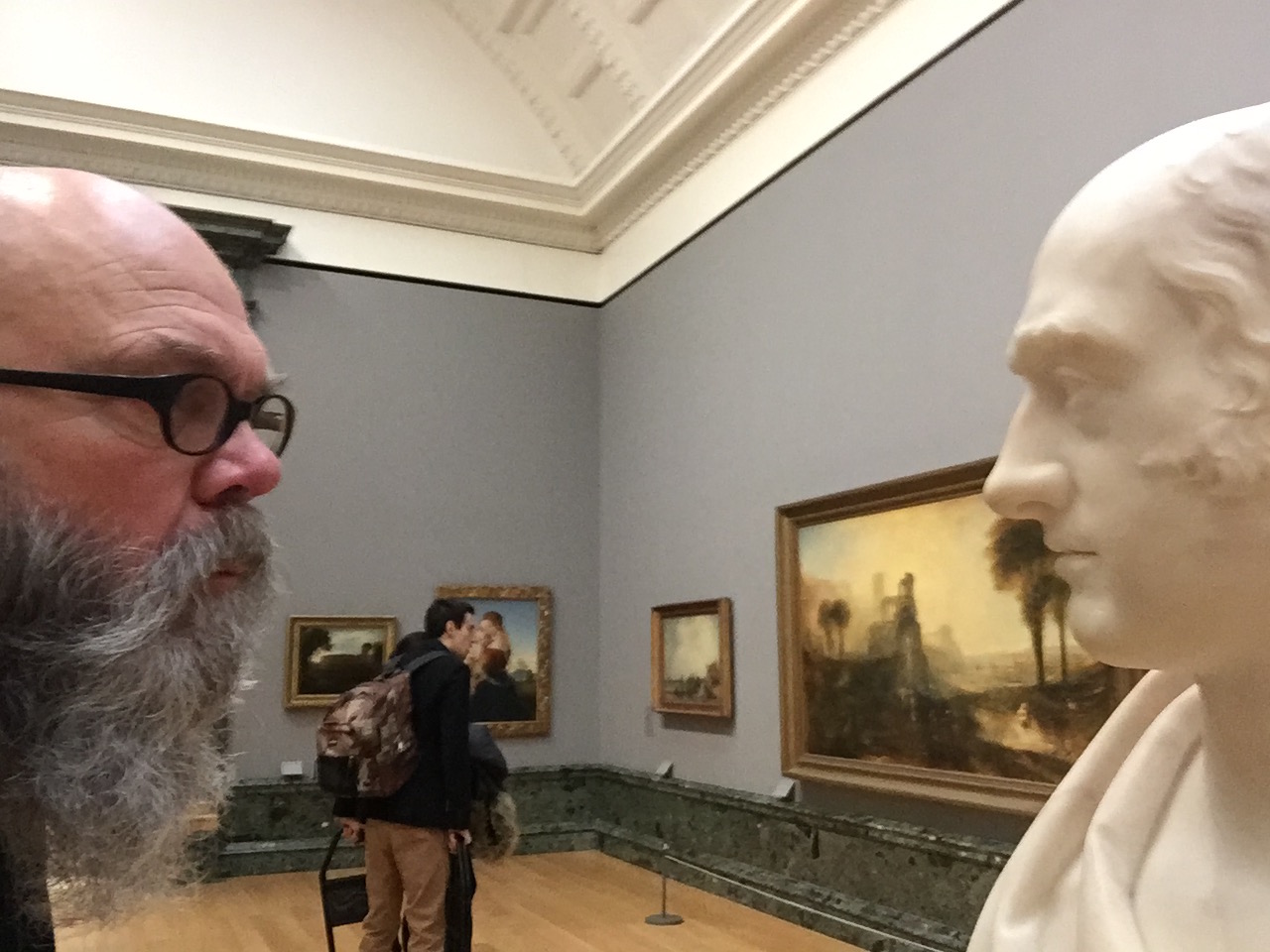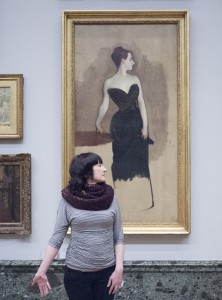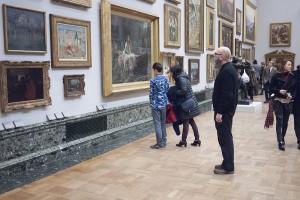TheParallelShow TheBook
Available at JapSamBooks.nl and at your local bookstore!
Posts by Frans van Lent:
#10: Its Authentic Quality
The Cloisters are constructed to look like an original mediaeval clerical building. The configuration of architectural elements suggests a unity, a historic coherence, but these elements originate from very different locations and from very different historic settings. For the construction of the Cloisters, parts of at least four different buildings in France and Spain were combined. The historic accuracy seems to be less important than the historic ‘atmosphere’ it evokes.
Do the curators and visitors recognise this museum as a part of their own past, or does it merely present the existence of the other, a more anthropologist point of view? Two days earlier I visited the American Museum of Natural History and I was fascinated by the presentation of natural scenes in the beautiful dioramas. Does art and architecture in the Cloisters play the same role as nature does in these dioramas, something you are intrigued by, but you will never experience to be actually part of? In its cold and sober qualities, the original Cistercian monasteries in France evoke an experience of modesty and spirituality. The Cloisters try hard to do the same but remain a spectacle.
I prefer to look at the museum not so much to study the Middle Ages, but to understand the position of the initiators and to perceive the museum primarily as a creation of American history of the nineteen twenties and -thirties.
I consider myself a descendant of the European culture, a historic relic maybe, as much alienated from this geographic location as the artefacts in the collection.
-Sitting on a bench in the Chapter house I looked up the Rules of Saint Benedictine, the official code of monastic behaviour, and read silently.

-As I walked through the corridors and rooms I hummed the Credo In Unum Deum as I remembered it from my childhood. Some passers-by will, even unconsciously, have recognised the Gregorian melody and will in their considerations temporarily be tilted to a more spiritual level.
The Chapter House had been part of the abbey of Ponteau, a Benedictine monastery, and the last centuries been functioning as a farmers stable till it was sold and transported to New York in 1932.
-I measured the space by means of steps. I imagined I own the space and I made notes of several possible ways to furnish it as a studio: were to put my desk, my chairs and my video-screen. I checked the possibilities in relation to the available (camouflaged) outlets.


-The arches around the Cuxa cloister have glass windows. The contrast in temperature and moisture between in- and outside covers the glass with condensation. Walking around the Cuxa cloister I made small drawings with my fingers on the surface, I followed the lines and arches I could distinguish looking through. After every drawing I waited and watched some seconds for the water to drip down. Again and again I walked round the cloister to make new drawings and found that other people were copying mine. More drawings appeared and disappeared again under new layers of condensation. Inhaling and exhaling.

-At the end of the morning, all of us were silently waiting for our lunch appointment. We were sitting on benches in the corridors and in the chapter house. Nobody said a word, everyone lost in his own thoughts. There was an atmosphere of collective concentration, a reality this building was trying so hard to rediscover.
After lunch we tried to evoke this special moment again, sitting on the benches for another fifteen minutes.
It did not work at all, it had lost its authentic quality.
Photos: SvL, FvL
#9: Room That Does Not Care
I followed the slow steps of an older attendant through the many rooms of the third floor. In his hands he carried a soft cloth and a bottle of detergent. He polished the glass coffee tables that nobody had used for so many years.
He also gently wiped the bronze face of Karl Marx. I noticed a warm affection in his gestures. It was not clear to me if this affection was for the bronze head as a museum artefact, or for the person that is represented by the head.
Every object in this museum is part of the personal history of many people.
Earlier this morning I visited all floors of the museum. I studied the exhibited materials, read many texts.
I noticed that visitors frequently returned to rooms they visited before, like scrolling back in a book to read over some sentences again. And so did I. When I stumbled across a person for a second or a third time I nodded as if we met a long time ago. A distant memory. Sometimes I got a response, sometimes not.
In my little black book I made notes of people studying the exhibit. I wrote down how they were dressed, what they were looking at, what other persons they spoke to. I realised that I was exactly copying the behaviour the museum presentation was about. Writing these notes illustrated the subject of study of the visitors. I added a dimension of live performance to their perceptions. And at the same time they were my subjects of study, it worked in two directions.
Sometimes the atmosphere became too uneasy. When my writing clearly bothered them, I stopped, left and started again in another room.
I entered the quarters of Erich Mielke: Room that does not care*.
There was hardly any textual information. Just the room and it’s furniture to impress the visitors. I looked for any sign of personal taste. I remember that some years ago a copy of the dead mask of Lenin was lying on this desk. It was taken away now, his desk was empty. In the office there was a diagram with the exact rules of M’s breakfast, drawn by the secretary.
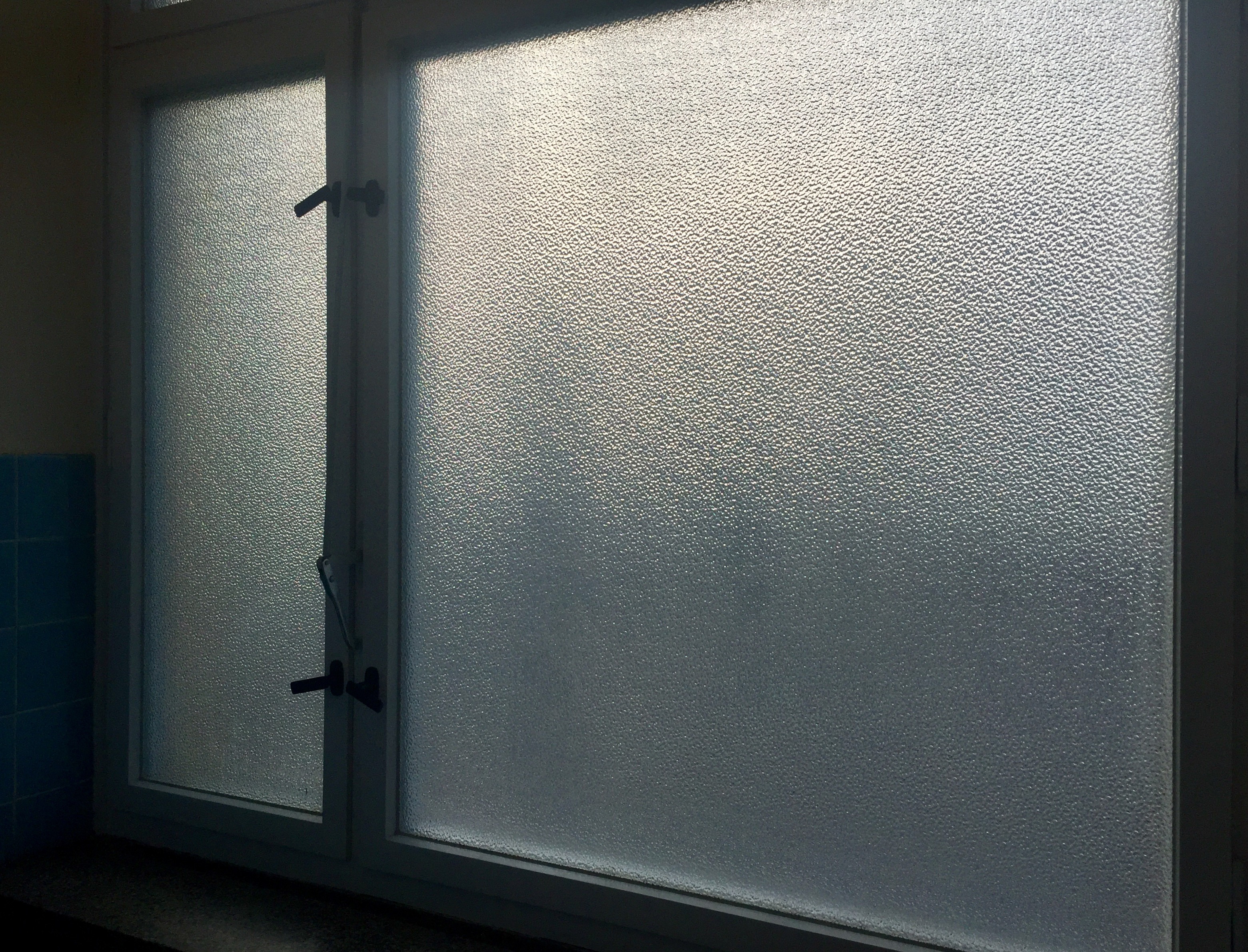
I asked the attendant if I could have a quick look in M’s personal bathroom, officially closed to the public. I went inside and I perceived the aged traces of use. I made a photo of the window that showed the world outside in a blur, as M will probably have noticed and reflected on, sitting on his toilet bowl.
One floor down: Many records of witnesses and informers, their photo’s were blurred by sheets of opal perspex.
When I pushed away the perspex the photo appeared, still with blurred eyes, the name in the text was made up: Martha Köhler, Arbeiterin, Zwickau/Ost-Berlin, 1960,
Her useful quality: Lernte schnell Menschen aus allen Schichten kennen!
* The day before ParallelShow#9 I saw again the great work Room With My Soul Left Out, Room That Does not Care by Bruce Nauman (Hamburger Bahnhof). I borrowed part of the title because it fits so perfectly.
Photos: FvL
#8: Exchanging Words
We started with 4 collective works. In one of the works Joana asked us to very softly touch the hanging lamps in Les Tombeaux of Christian Boltanski. The installation regained a touch of life. Even though it temporarily changed Boltanski’s work, It felt beautiful and respectful.
Part of the exhibition Lost in the City was a screen showing a (looped) 12 minutes fragment of the film In the Street (1947) by Helen Levitt. After I watched the film, it started again with a text about the subject: the life in the poor quarters of the big city. This text ended with: ‘The attempt in this short film is to capture this image’.
So I watched the film again the full 12 minutes and then made a photo of that particular frame.

The same exhibition showed the work Modern Tower 8 by Julian Opie. The sculpture was placed directly on the floor without the use of a base. Presented that way, it created a very convincing illusion of size.
I decided to stand very close to the tower to influence that illusion: viewers might look at me and by doing that they would miss the sensation of size.
They could also focus at the tower. That would include me in the illusion, would turn me into a giant.
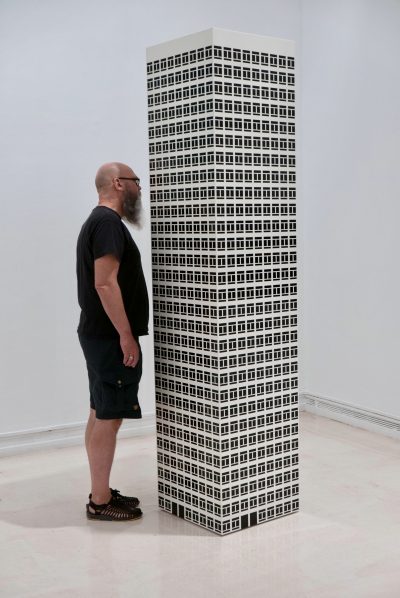
When we were spread out over the various parts of the museum, I sent around a text message.
In this message I asked everyone to choose a word and then to start looking for the other participants.
When we met someone, we should discretely exchange our personal words.
I was studying a work of Gregory Crewdson: – an old man crossing a wet street-, when I felt a person coming very close. Elia whispered a word in my ear. When I answered she quickly disappeared. I then walked out of the room and I noticed Joana. We just passed each other closely and softly spoke our words, almost at the same moment.
On another floor I saw Nico walking. I entered the space through smoked glass doors, and walked straight towards him. We both spoke out the words and I turned around and left again through the doors.
Then for a long time I was looking for Pepe. I vainly walked through all exhibition rooms and, a bit confused, I sat down on a bench in the hall. Just seconds later Pepe sat down next to me, looking a bit triumphant.
We said our words and these were the final words for both of us.
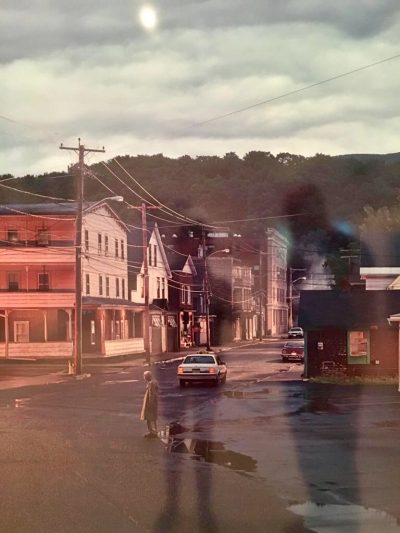
Elia and I exchanging words in front of a work by Gregory Crewdson
Photo’s: FVL, NP, ET
#6: Group Lift and a Map of Storage
I visited the Sanctuary of Apollo before. Today, compared to my last visit twenty years ago, the site is in its organisation far more adapted to the growing number of visiting tourists.
More fencing, more concrete, more signs. And also more supervision.
Until early afternoon the site was very crowded, many groups were moving around.
It was difficult to cut oneself off from this, so I used it as a point of departure.
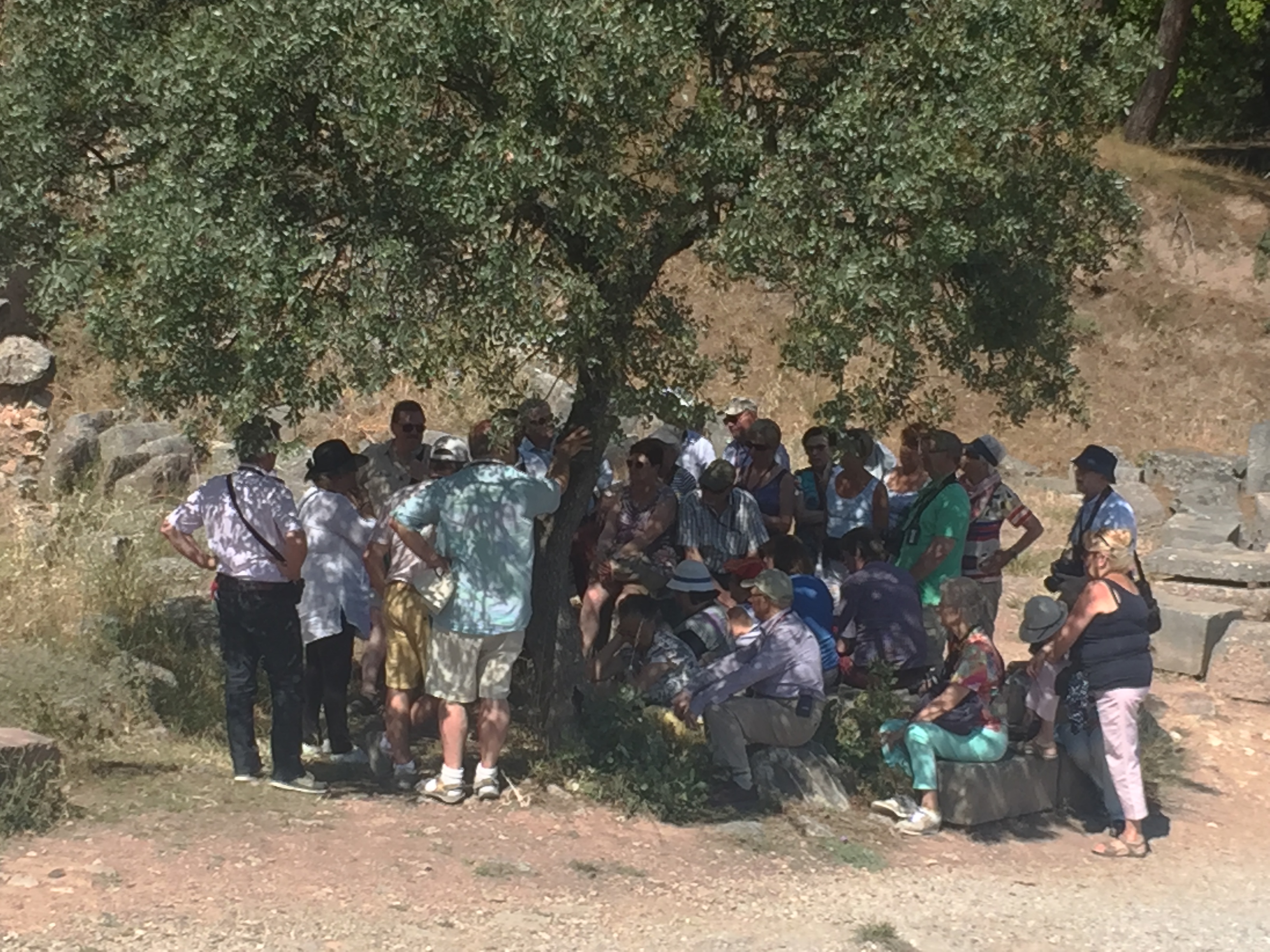
Group Lift
The work started at the entrance of the site. I waited for the first organised group to pass me.
I joined this group in their way up, became part of it. When the group stopped for an explanation from the guide, I stopped too. When I noticed somebody of this group making a photo I went to that same spot and took the same shot.
Copied tourists photo-positions
When another group passed the first group, I stepped over and joined that group to it’s next stop.
Again, as soon as I noticed somebody making a photo I made a photo from the same spot.
This process continued till I reached the highest part of the site, the Stadium.
The work started smoothly but slowed down on the way up. The groups became smaller (and younger) because the climbing was tiring. The last group up to the Stadium consisted of just three Italians climbing together. The organised groups already stopped at a lower level.
When I reached the Stadium the work ended.
Later, when it was less crowded, I was able to focus more on the physical aspects of the site itself.
Map of Storage
I made a series of photo’s of parts of the terrain without a presentation structure, parts where stones are nothing more than remains, leftovers. The site is, next to a historic spiritual center, also a storage of architectural objects that lost their initial purpose. What was once given to Apollo was never to leave his Sanctuary again.
#6: Archeological Site, Delphi (general report)
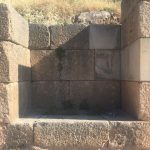
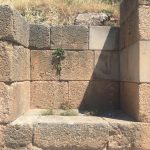
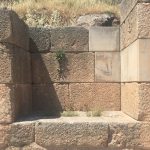
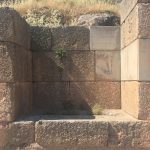
We all met the day before at the busstation in Athens. Together we travelled to Delphi.
On arrival we agreed to meet next morning at opening time at the Archeological museum.
On Saturday May 28 at 08.00 we came together at the entrance of the museum.
We bought tickets for the museum and the archeological site, we had a coffee and I explained to the others the character and the background of TheParallelShow. We discussed the experimental nature of the project and the possibility to change any rule (except the rule of leaving no traces).
We then all individually left for the Sanctuary to explore the site and to find possibilities and opportunities.
At the start we were tourists as well as participants in the project, and susceptible to the history and beauty of the site. It takes some time to get accustomed in order to distance oneself somewhat from that first impression.
At 12.00 we met again at the entrance and, as a group, returned to the town to have lunch and to discuss the possibilities.
After lunch, back at the site, we started to carry out two cooperative works (concepts of Ellen and Maarten) and then the team split up to perform all individual works.
Finally we met again at the entrance of the museum at 18.00.
#5: Talks and Calls
An art fair is about art but it is even more about competition, shortlists and commercial value.
It is a spectacle, loud, chaotic, overwhelming. Within these dynamics it is difficult to focus.
I decided to aim mainly at the social activities around the art.
Calls
In my pocket i carried a business model telephone. I asked my colleagues to call me on that phone as often as possible during the day. When they called me I never answered, I never got the phone out of my pocket. It just rang on till it automatically switched to voicemail.
I assumed the sound radiated a message of personal importance on one hand, and of arrogant indifference on the other: I clearly looked like a person people wanted to speak to and I chose to ignore the calls because I had ‘other things’ on my mind.
I hoped this made me more a player than an art lover.

Talks
The second work was connected to the first. as said I decided not to focus on the presented artworks, but to focus on people in and around the gallery booths. So I looked for acquaintances, for people I met before.
Whenever I recognised somebody and it was possible to approach the person, I started a short talk. Often it was just chitchat but sometimes it developed into an interesting conversation.
As soon as my colleagues noticed me speaking with somebody, they turned into an audience and were consciously observing the dialogue.
Looking at a work for 15 minutes
Ieke Trinks asked each of us to choose one specific work of art and to observe that for (at least)15 minutes. I chose the work Kalochrome by Michael Portnoy. In this work Portnoy uses image-steganography, a method for hiding (other) images within the encryption of the image.
Such a long-time observation fitted this work perfectly. This way it might be possible for me to enter its hidden layers.
So I stood there for fifteen minutes, studying the image. Slowly its surface changed, from just the depiction of a green kale into an abstract digital grid. There it stopped, nothing more was revealed.
The long time gaze took away the spatial illusion of the photo and in return it gave a clear focus on its actual material surface.
Some time ago I had this same experience in my performative work Polder.
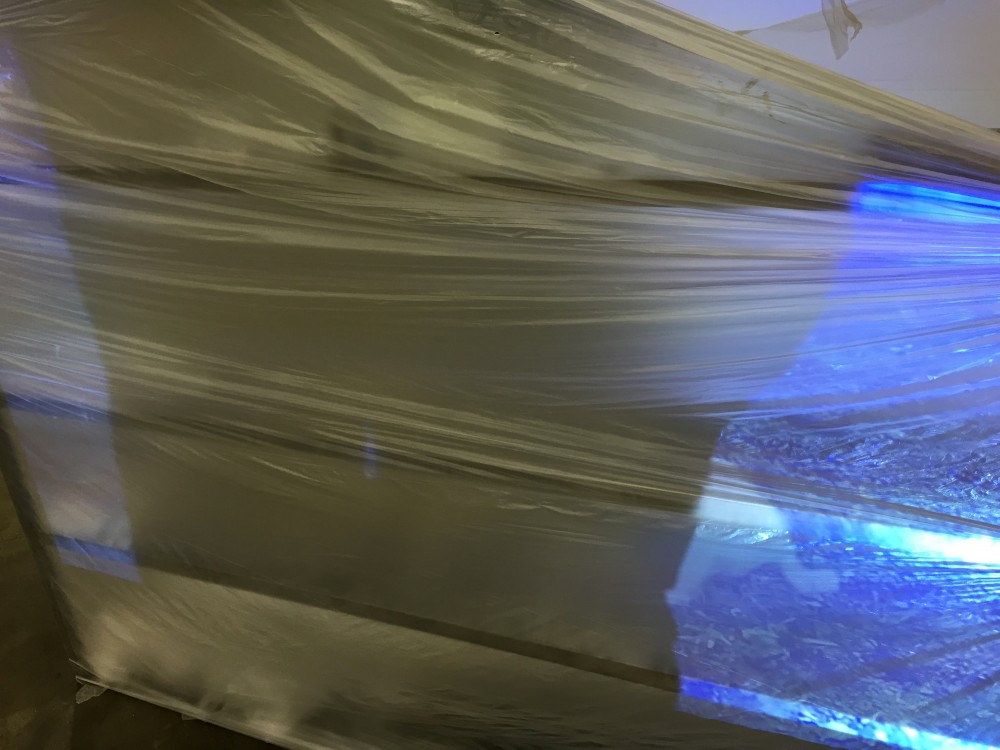
A new layer
Daniela Degen asked us to put ‘a new layer’ on a presented artwork, a gesture to influence its appearance, to change its aura. In an installation I stood between the beamer and the object it projected on. By blocking part of the beamed image I brought back the material qualities of the plastic projection surface. For a short time it regained some of its sculptural qualities.
Photos: © IK, ©FvL
#5: Art Rotterdam (general report)
We met on February 11 at 11.00 in front of the main entrance of the Art Rotterdam Art Fair.
We entered the restaurant together for a cup of coffee and to discuss our approach to the event.
A year ago we already planned The Parallel Show at the Art Rotterdam Art Fair 2015.
Ieke Trinks, Ienke Kastelein, Peter Baren and I discussed the concept during a meeting in my studio some weeks before. At that time there was no intention of making it the start of a series, it was conceived as a unique occasion.
Because of personal circumstances this ParallelShow was finally cancelled. Some months later, in July 2015, it still took place at the Kunsthal in Rotterdam (#1).
Because of our positive experiences at this first occasion it became the start of a series of ParallelShows.
For that original Parallel Show in the art fair of 2015 we had a clear idea how to approach. We would all design a personal concept for one chosen gallery booth. In this gallery booth we would perform this work (without invitation or anouncement) in front of the group, as a practical instruction to all participants. After that we would all carry out each others works successively in the chosen gallery booths, thus creating a repetitive line of performances.
Of course this original concept was discussed again in this new occasion. The group was slightly different now. Peter was not joining us and Andrew and Daniela were now part of it.
Not all of us were convinced about the original framework so we first visited the shows individually before we decided how to proceed. We would meet again for lunch at 01.30.
At the lunch meeting, we concluded not to use the original framework. We all had our own clear ideas on what to do. We discussed the plans and decided what to perform, individually and together, and in what order. After lunch we returned to the show together.
Finally it turned out to be a mix of solo works and groupworks in a somewhat chaotic improvised setting, probably the clearest representation of the dynamics of this type of art show.
#4: The Coherence of Things
1960. A room full of Henry Moore sculptures.
Some of the sculptures were sitting, some were lying and some where stuck in between. I sat on a small bench and tried to internalise some of these postures. Just like me, my camera on the floor in front of me did not have a clear idea what to focus on.
Later (room 1990 I think it was) I met Andrew. I explained him what I did, showed him some photos. We talked about the relation with the work Pose Work for Plinths of Bruce Mclean. And only a few minutes later exactly that work showed up on a wall in room 1970 .
This strange coincidental appearance proved to be a set up for the afternoon.
I decided to focus on the relation between the artwork, the beholder and the beholder of the beholder of the artwork, in other words: art, visitor and attendant.
The museum is a place of looking.
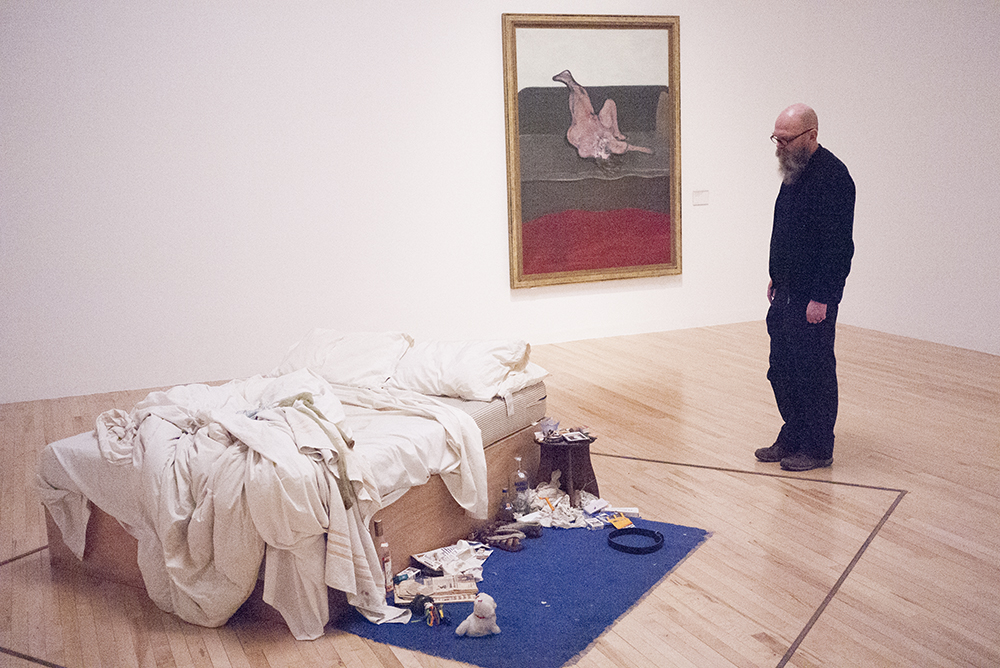
I searched a work with the quality to look back at me. I found it in room 1990: Tracey Emin’s My Bed, provocatively approaching the visitor in blunt exhibitionism. I asked the attendant to make a photo of me looking at the artwork. The visitor is not allowed to interfere with the artwork. The attendant is responsible for that. It seems to me that in the same way the attendant is not allowed to interfere with the visitor. And he is watched by CCTV too. I could see the expression of doubt in the face of the man before he took my camera and made the photo.
Some time later I walked into the rooms 1900. In front of John Singer Sargent’s Portrait of Madame Pierre Gautreau a man was trying to internalise the posture of Mme Gautreau. I asked him what he was doing and he explained that he was preparing a lecture about this particular portrait. He was studying to understand the (in those years provocative) quality of the posture. I offered to help him by making some photo’s.
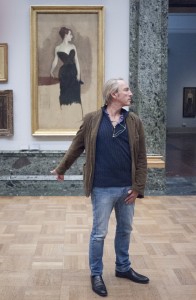
Later I showed these photos to Lisa and she was surprised and explained to me that when she was younger, she was told that she resembled the lady on this specific painting. So I made some photos of her in front of the painting.
When I finished I turned around and a man spoke to me. To my surprise he asked me to make a photo of him while he was looking at the artwork in front of him. He handed me his camera. Of course I agreed and in return I asked him to make a photo of me, looking at the same artwork. Distracted by the apparent coherence of things I forgot what artwork I was actually looking at.
Photo’s: © FvL

